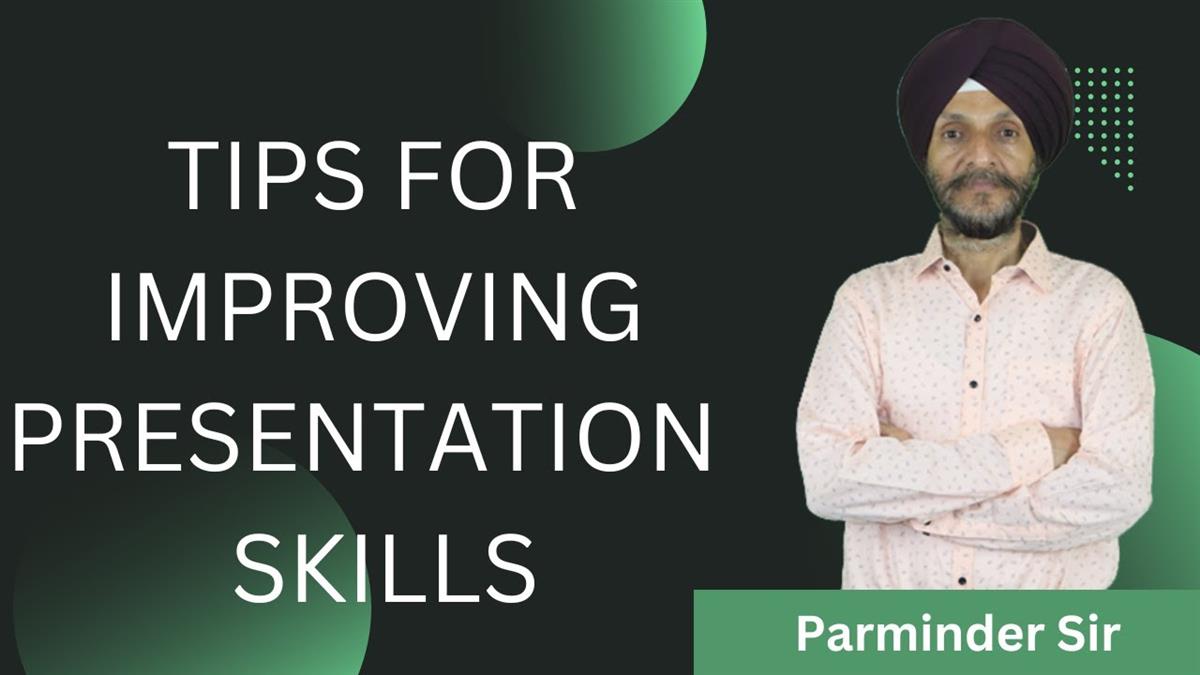
Mastering Presentation Skills: A Complete Guide to Engaging Audiences
Whether you’re giving a sales pitch, leading a business meeting, or speaking at a conference, presentation skills are crucial for effectively conveying your message and engaging your audience. Strong presentations can boost your credibility, improve your career prospects, and leave a lasting impression on listeners. In this guide, we’ll explore the essential skills and techniques that will help you deliver engaging and memorable presentations.
Introduction to Presentation Skills
Presentations are more than just delivering information—they’re about engaging your audience, communicating ideas clearly, and leaving a lasting impact. In both personal and professional settings, mastering presentation skills can open doors to opportunities and help you become a more confident and persuasive speaker.
Think about it: Have you ever listened to a presentation that left you feeling inspired, informed, or even entertained? Now compare that to a boring presentation where the speaker droned on with dull slides and little interaction. The difference lies in the speaker’s ability to connect with their audience and deliver their message effectively.
Understanding Different Types of Presentations
Before jumping into developing your presentation skills, it’s important to recognize the different types of presentations you might encounter:
- Informative Presentations: These focus on delivering facts, figures, and information. Think of educational seminars, reports, or updates.
- Persuasive Presentations: The goal here is to convince the audience to adopt a certain viewpoint or take specific action. Sales presentations often fall into this category.
- Business and Sales Presentations: Typically focused on driving business outcomes, these presentations aim to promote products, services, or company initiatives.
- Educational and Training Presentations: These are designed to teach or train the audience on a specific topic or skill.
The Elements of an Effective Presentation
Every great presentation follows a structure that keeps the audience engaged and informed. At its core, an effective presentation should have:
- A clear message and purpose: What do you want your audience to take away? Your core message should be clear from the start.
- A strong structure: Begin with an engaging introduction, present your main points in the body, and wrap up with a memorable conclusion.
- Visual aids: Support your message with slides, charts, images, and videos that reinforce your points without overwhelming the audience.
Knowing Your Audience
One of the golden rules of presenting is to know your audience. The more you tailor your presentation to their interests, needs, and expectations, the more likely you’ll keep them engaged. Start by asking yourself:
- What are their key concerns or problems?
- How can my presentation provide value or solutions?
For instance, if you’re presenting to a group of financial analysts, you’ll need to focus on data and ROI. But if you’re speaking to a creative team, a more visual and narrative-driven approach might be more effective.
Crafting a Powerful Presentation Message
Your presentation should revolve around a single, powerful message. Whether it’s a call to action, a new idea, or a compelling piece of data, keep this message at the forefront.
A great way to drive your message home is by using storytelling. Stories create emotional connections and make your points more relatable. For example, instead of just stating that your product improves efficiency, share a success story about a client who saved hours of time after using your product.
Designing an Engaging Presentation
The visual aspect of your presentation plays a huge role in keeping your audience’s attention. When designing your slides:
- Use minimal text—focus on keywords rather than paragraphs.
- Choose impactful visuals that illustrate your points, such as charts, infographics, or compelling images.
- Keep the layout clean and professional, using consistent fonts and color schemes.
Avoid overcrowding your slides with too much information. Remember, your slides are there to support what you’re saying, not to serve as a script.
Body Language and Non-Verbal Communication
Good posture, purposeful gestures, and strong eye contact can help you come across as confident and engaged. Avoid pacing nervously or crossing your arms, as these can make you seem unsure or closed off.
For example, when making an important point, a slight lean forward and direct eye contact can emphasize your conviction. Open hand gestures show transparency and encourage trust.
Vocal Delivery and Tone Control
Varying your tone, volume, and pace keeps the audience engaged and ensures key points are emphasized. Use a dynamic speaking style to avoid sounding monotonous or robotic.
- Pacing: Slow down when explaining complex concepts, and speed up slightly when telling an anecdote or simple information.
- Pauses: Use pauses effectively to let important points sink in or to build suspense.
Managing Presentation Anxiety
It’s natural to feel nervous before presenting. Even the most seasoned speakers experience anxiety, but the key is learning how to manage it. Some helpful techniques include:
- Deep breathing: This helps calm nerves and reduces stress.
- Visualization: Imagine yourself successfully delivering the presentation to build confidence. Remember, nervous energy can be channeled into enthusiasm—use it to energize your delivery!
Engaging and Interacting with Your Audience
To keep your audience engaged, encourage participation. Ask questions, take polls, or invite feedback during the presentation. Interaction makes the audience feel involved and keeps them attentive.
Handling audience questions can be tricky, but preparation helps. Listen carefully, answer succinctly, and if you don’t know the answer, don’t be afraid to admit it and offer to follow up later.
Handling Technical Aspects of Presentations
Technology can be your best friend or worst enemy during a presentation. Always test your equipment beforehand—whether it’s a projector, microphone, or video connection for online presentations. Have backups ready, like a printed version of your slides or a second device, in case of technical difficulties.
Practice and Rehearsal Techniques
One of the best ways to improve your presentation skills is through practice. Rehearse in front of a mirror, record yourself, or present to a small group for feedback. This helps you identify areas for improvement and boosts your confidence for the real thing.



